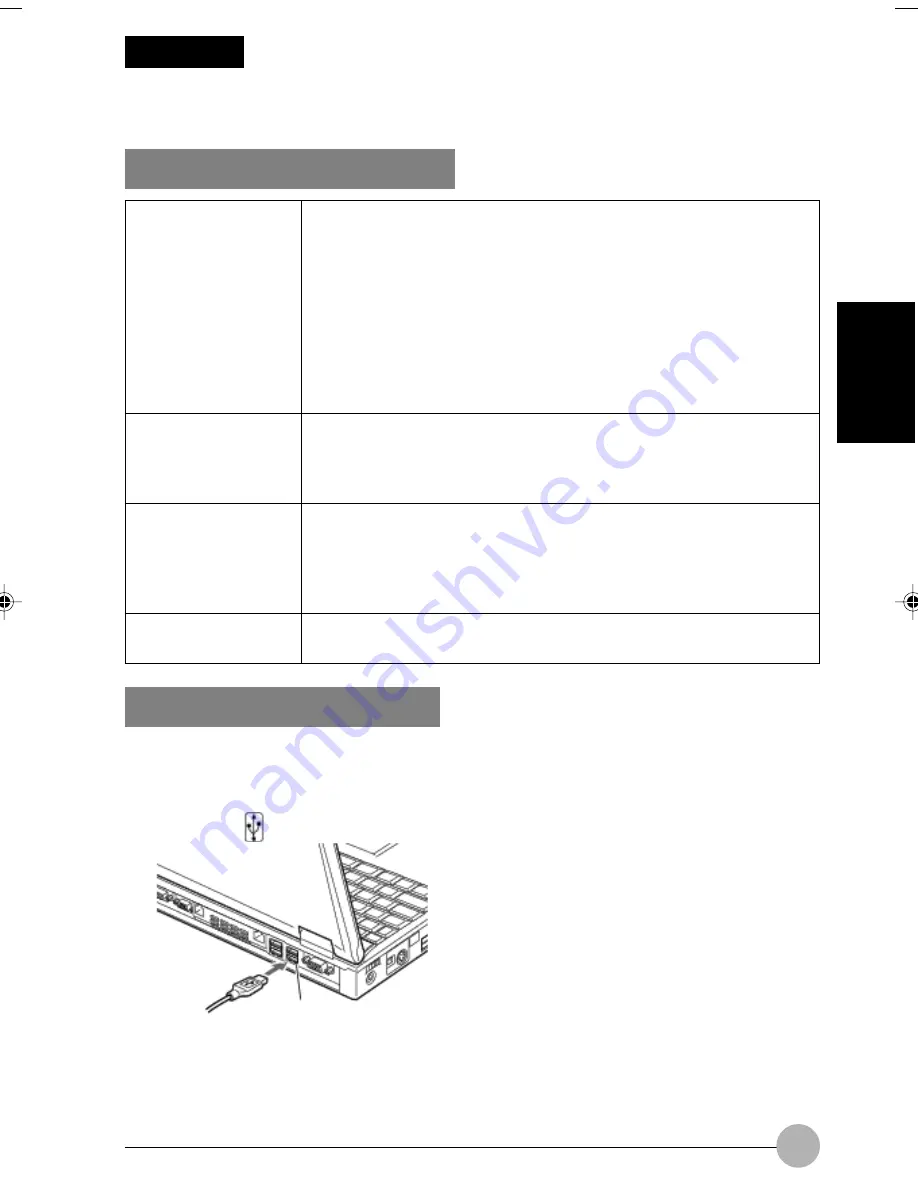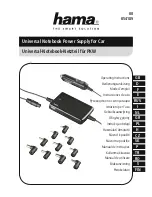
201
SECTION 2
SECTION 2
5. Connecting a USB Device
USB device
Refers to USB standard-compliant devices. Here are typical examples
of USB devices. Prepare a USB device that meets your need.
• Digital camera
• CCD camera
• Mouse
• Terminal adapter
• Printer
• Scanner
• Keyboard
• Speaker
USB cable
Used to connect a USB device to the computer. Some USB devices
come with a USB cable. For some USB devices, e.g., USB mice, the
USB cable is an integral part of them. For more information, refer to
the manual for the USB device you want to connect.
USB device driver
Some USB devices come with a CD or floppy disk that contains their
respective drivers. If two or more floppy disks are included with your
USB device, use one that is compatible with Windows installed on
your computer or that is marked with “For PC/AT-compatible
computers” .
Manual for USB device
Ways of connection vary from USB device to USB device. So be sure
to read also the manual for the USB device used.
Connecting a USB Device
1.
Connect a cable to the USB device you want to use.
2.
Plug the other end of the cable in the USB port on the back of your computer, with the USB
connector’s
-marked surface up.
(The illustration varies depending on the model and use conditions.)
3.
Install the device driver.
Some USB devices get ready for use only if being connected and they don’t require the installation
of a driver. For more information, refer to the manual for the USB device used.
USB port
Preparing Necessary Items
LB15_Erg14i (193-203)
24/01/02, 1:52 PM
201
Summary of Contents for LifeBook C6659
Page 202: ......
















































